One of the most common questions I hear from creators is whether they should build their creator brand behind their name, or behind a project (company) name.
I won't claim that there is a right or wrong approach here – but I will share my approach and how I came to that decision.
My approach is to show up as Jay Clouse (@jayclouse) on social media (including YouTube). I use those accounts to draw attention to my one main project: Creator Science.
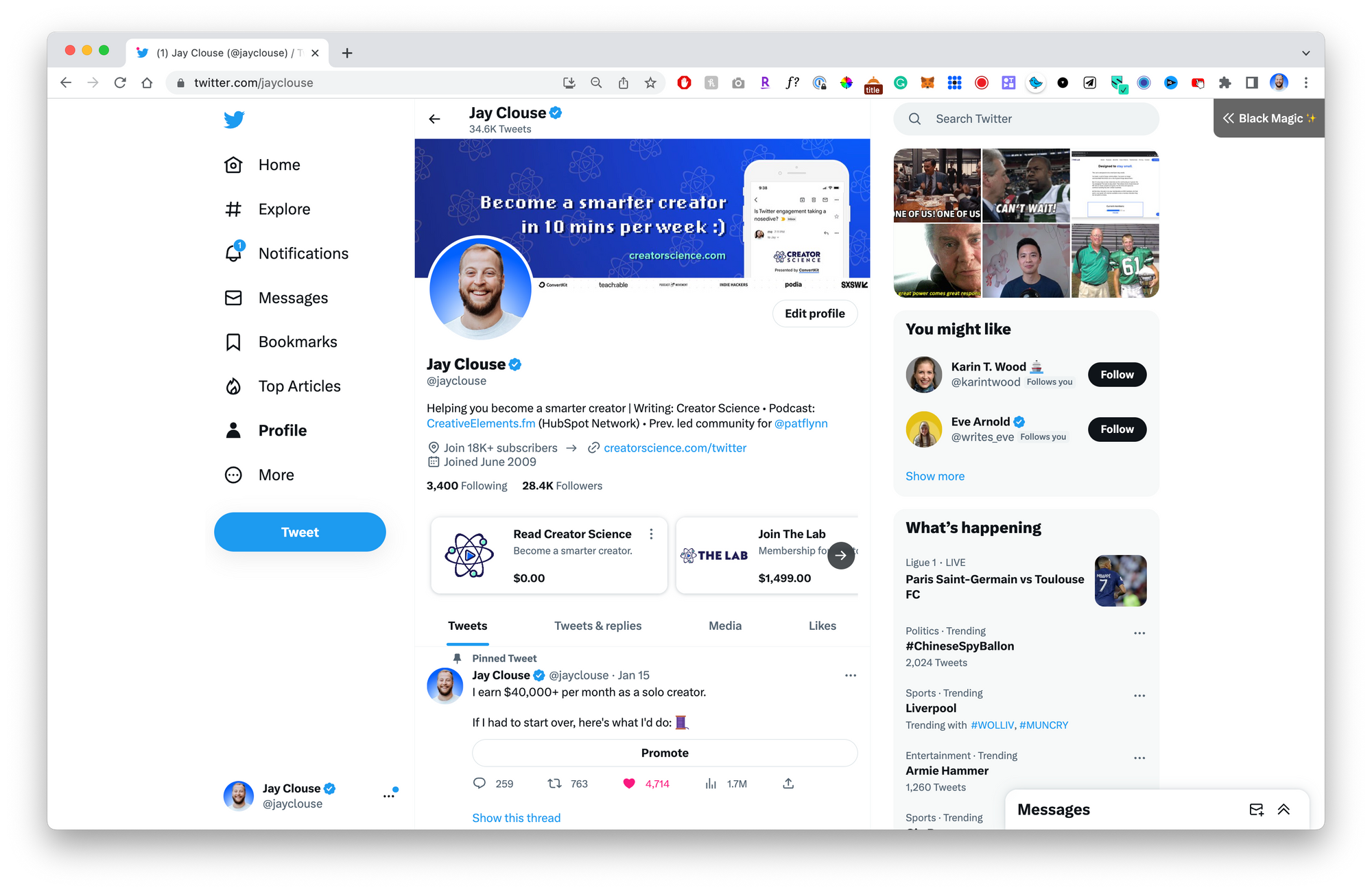
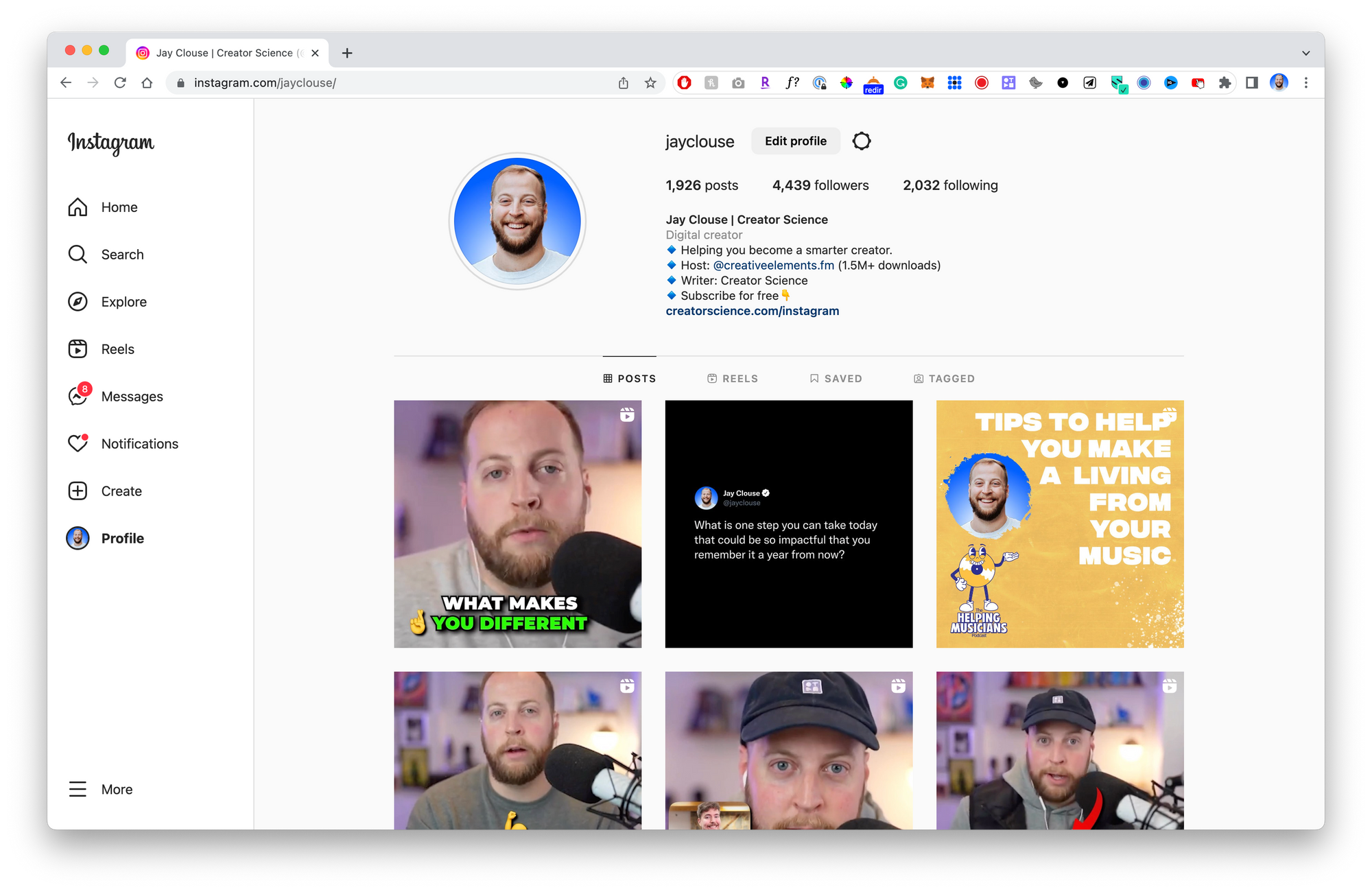
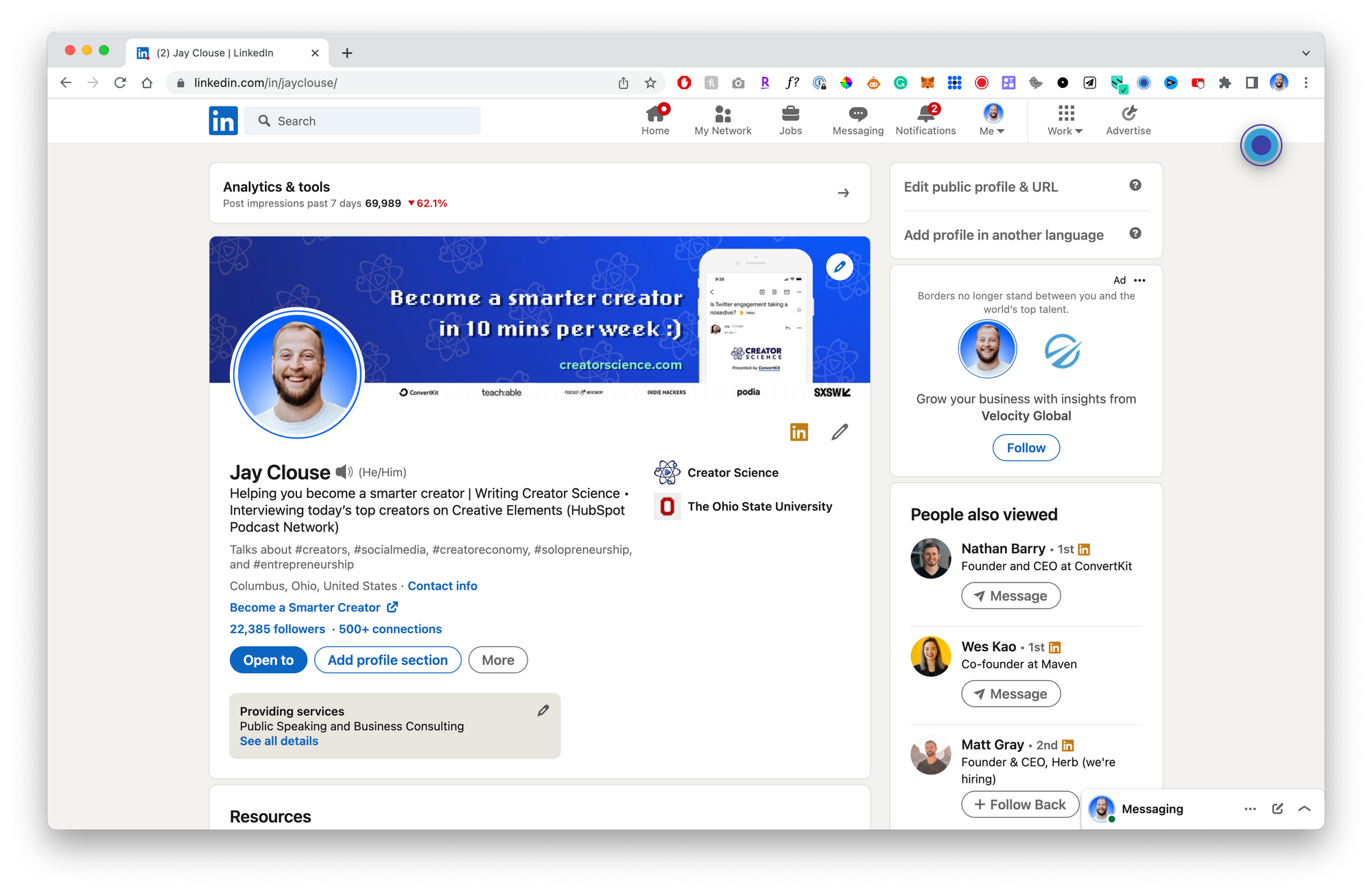
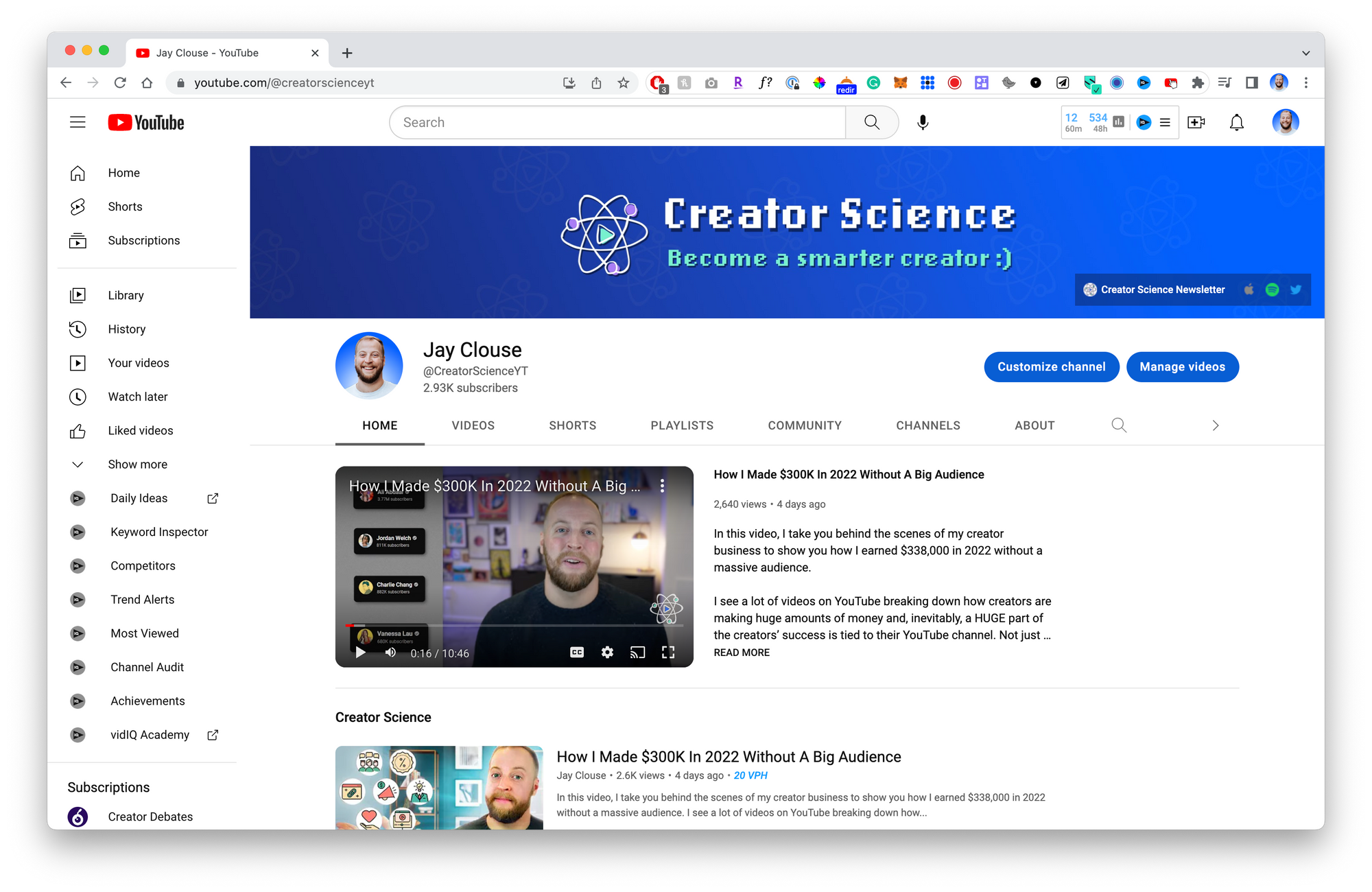
This has been an evolution over literal YEARS, but once I started leaning in this direction, my growth accelerated faster than ever. Could be a correlation and not causation, but I don't think it's a total coincidence.
I've come to have a few strong beliefs about social media:
- If you're not consistently active on social (regardless of personal or brand account) then it won't really serve you. It's not going to grow and it's not going to have a positive, legitimate reflection on the brand (a dead company account looks worse than no account at all).
- To be active with BOTH a personal and company account, you would need to double your social output – and that's very challenging. It's hard enough to succeed with ONE account on social – let alone two.
- People want to connect with PEOPLE on social. It's a rare occurrence that a brand page is highly engaged and creates the same level of brand affinity that a personal page can. It feels like we're engaging with an entity that may be made up of LOTS of people, so we don't feel a pure, human connection.
- Since PEOPLE are more easily discovered on social media than company pages, you can direct that attention to your work.
- You can really only EFFECTIVELY direct attention towards ONE project.
That last point is important. As a chronic project starter, I really felt this pain for a long time.
When I would appear on a podcast or be introduced to a group, the introduction always sounded something like this:
This is Jay Clouse. Jay is the writer of the Creator Science newsletter, the creator of Tweet100, the host of Creative Elements, he also has a project called Freelancing School...
And while that was all TRUE, it wasn't a very effective introduction. It's too much – people couldn't remember all of those things, and few are curious enough to dig into ALL of them.
The point of appearing in front of a group is to drive attention to whatever thing you're trying to drive attention to! And when you split it, you basically lose all of that attention right from the start.
I would much prefer to be known as "Jay Clouse – the founder of Creator Science."
Not only is it simple and memorable, but being the "founder/creator" of [single thing] places ALL attention on that project. And, as the sole focus, it feels more legitimate.
Now, you'll notice in the screenshots above that in my social profiles, I'm still attempting to call attention to BOTH Creator Science and Creative Elements. And that bugs me on a constant, daily basis.
This is because Creative Elements as a project and brand pre-dates the brand Creator Science (that rebrand happened in mid-2022.) Later this year, I'll be renaming the podcast to Creator Science. (You heard it here first!)
I do tend to register the social handles of my brand and squat on them, even though I have no immediate plans for them. (I waited too long to grab @creatorscience as a YouTube handle and that bothers me on a daily basis as well).
I came to this approach by studying other creators who I saw growing quickly and felt had a very tight, cohesive brand.
Namely, I admired:
- Codie Sanchez (Contrarian Thinking)
- Tori Dunlap (Her First 100K)
- Tiago Forte (Building A Second Brain)
- Andrew Huberman (Huberman Lab)
- Dan Runcie (Trapital)
- Dru Riley (Trends.VC)
Each of these people is known by name, but they're also closely associated with a single brand name. Those projects have weight and esteem, they stand on their own, and yet their creators are still recognized by name.
Look at how these names play together:
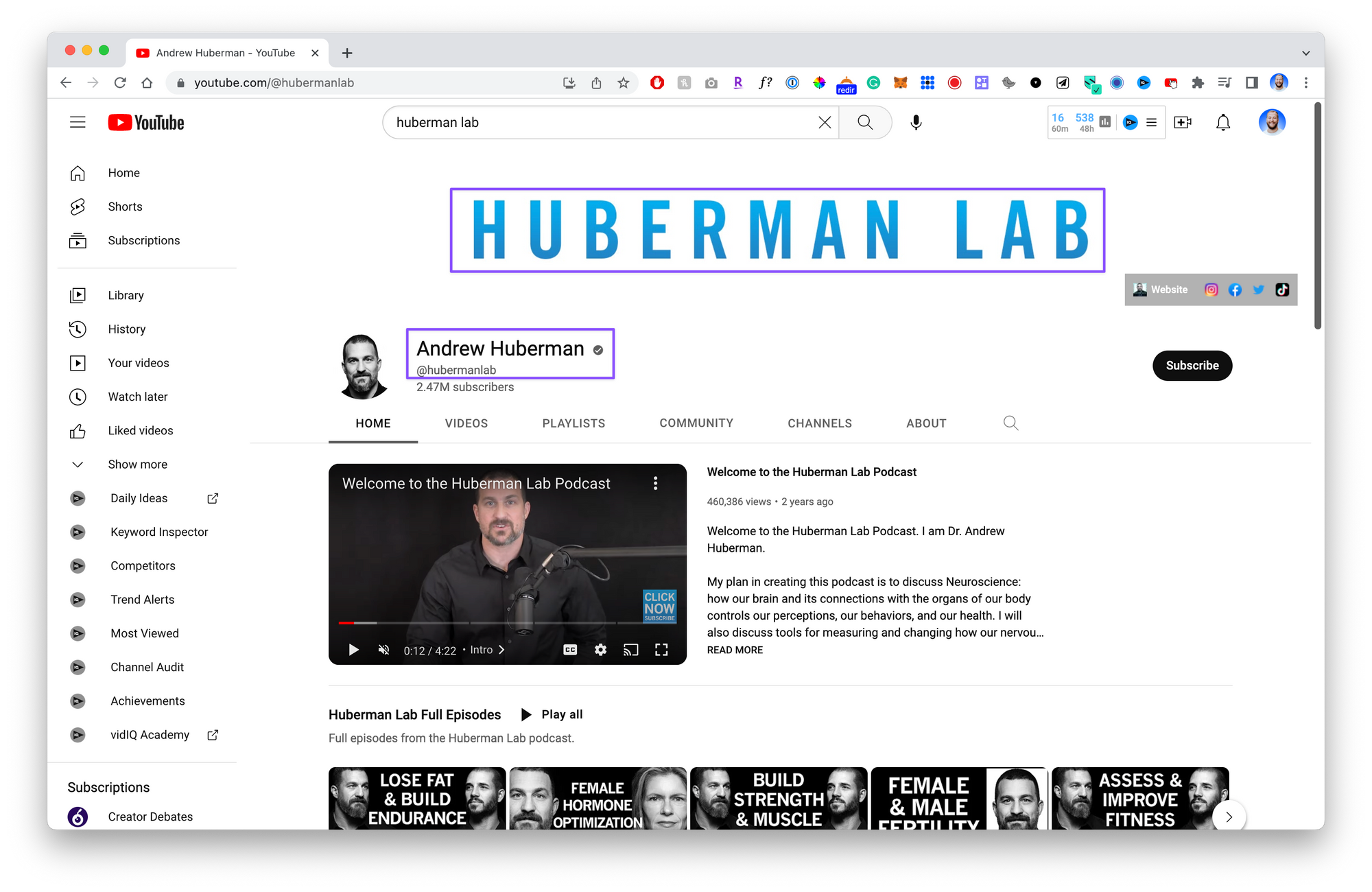
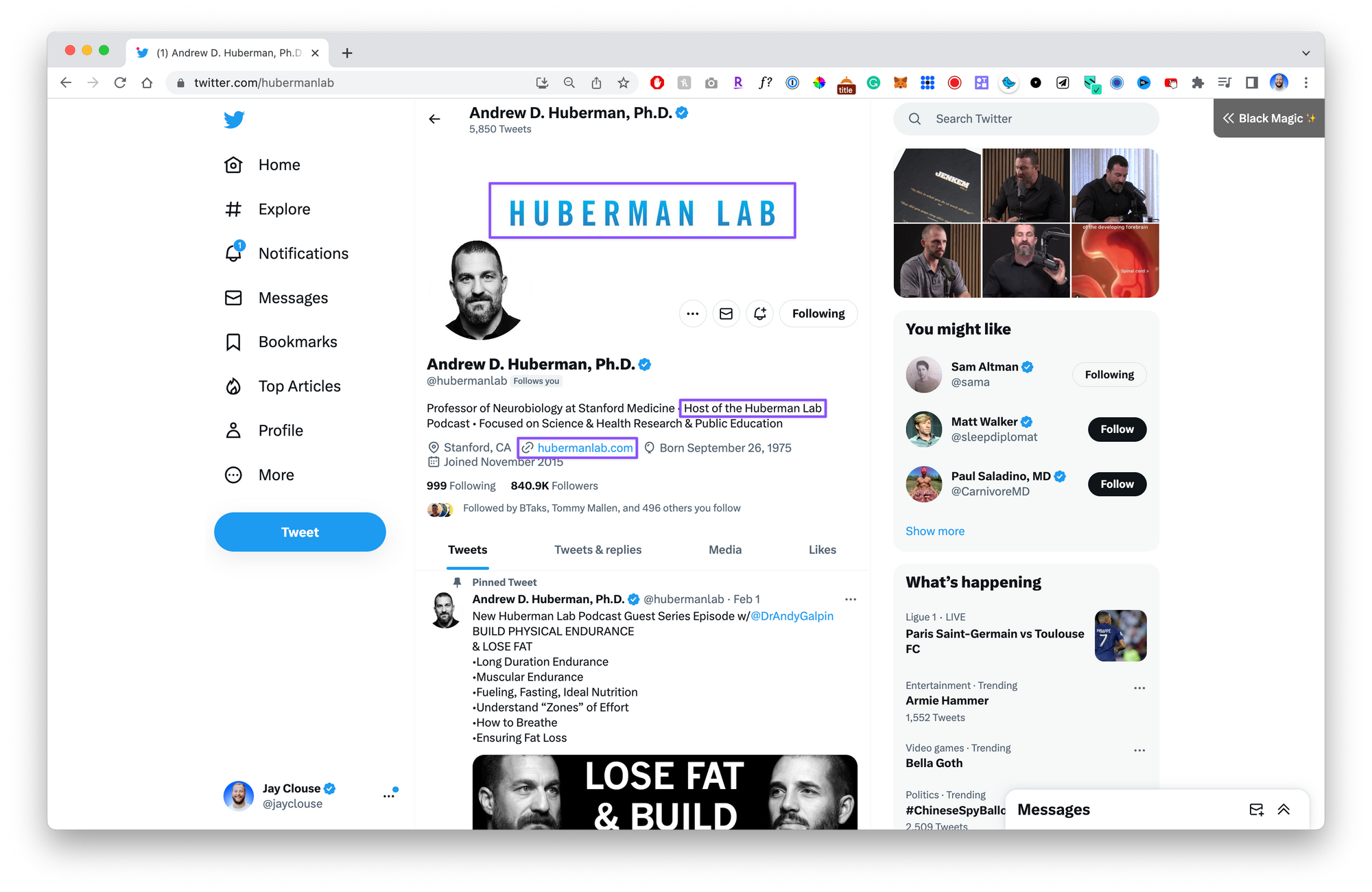
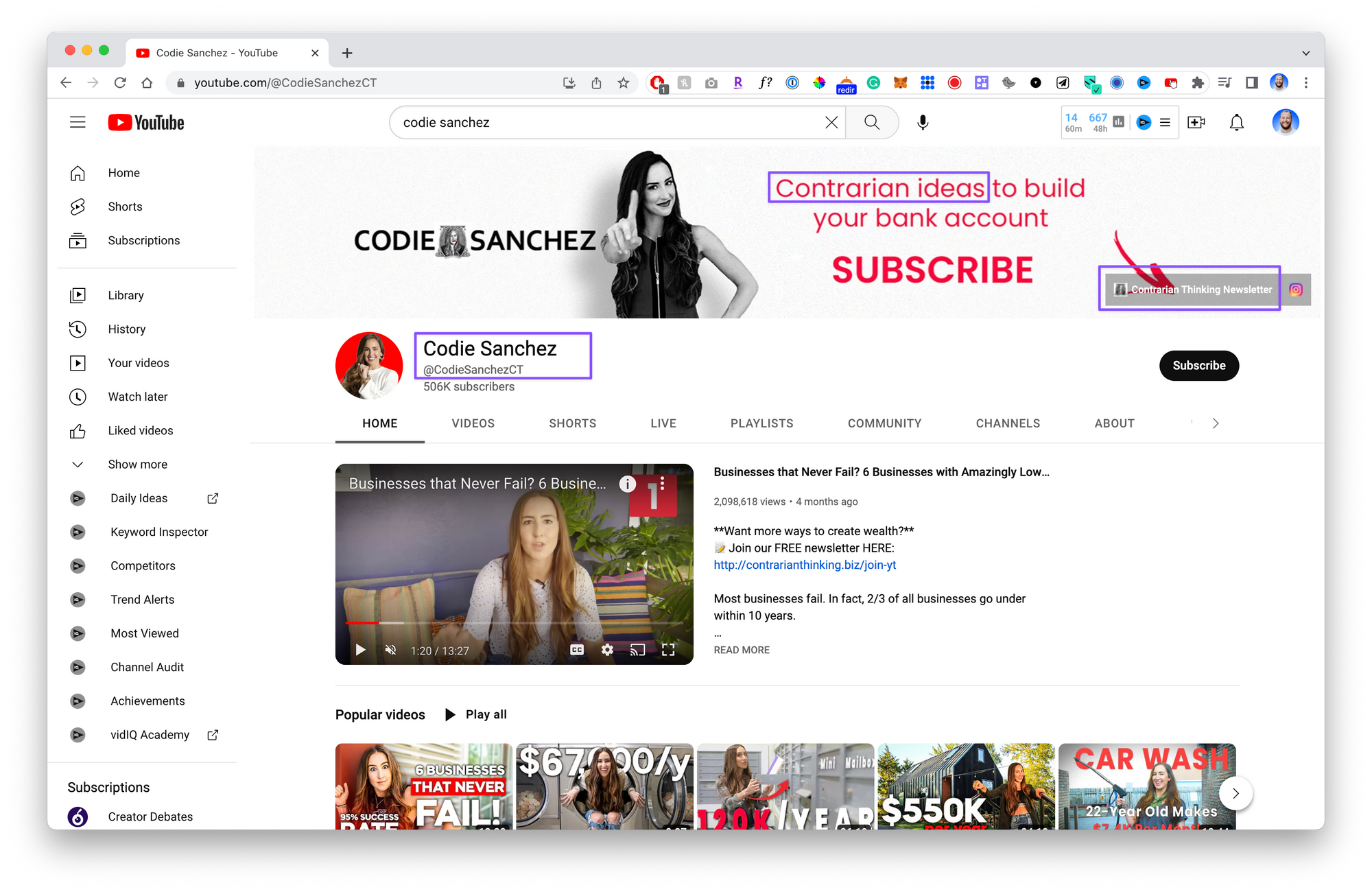
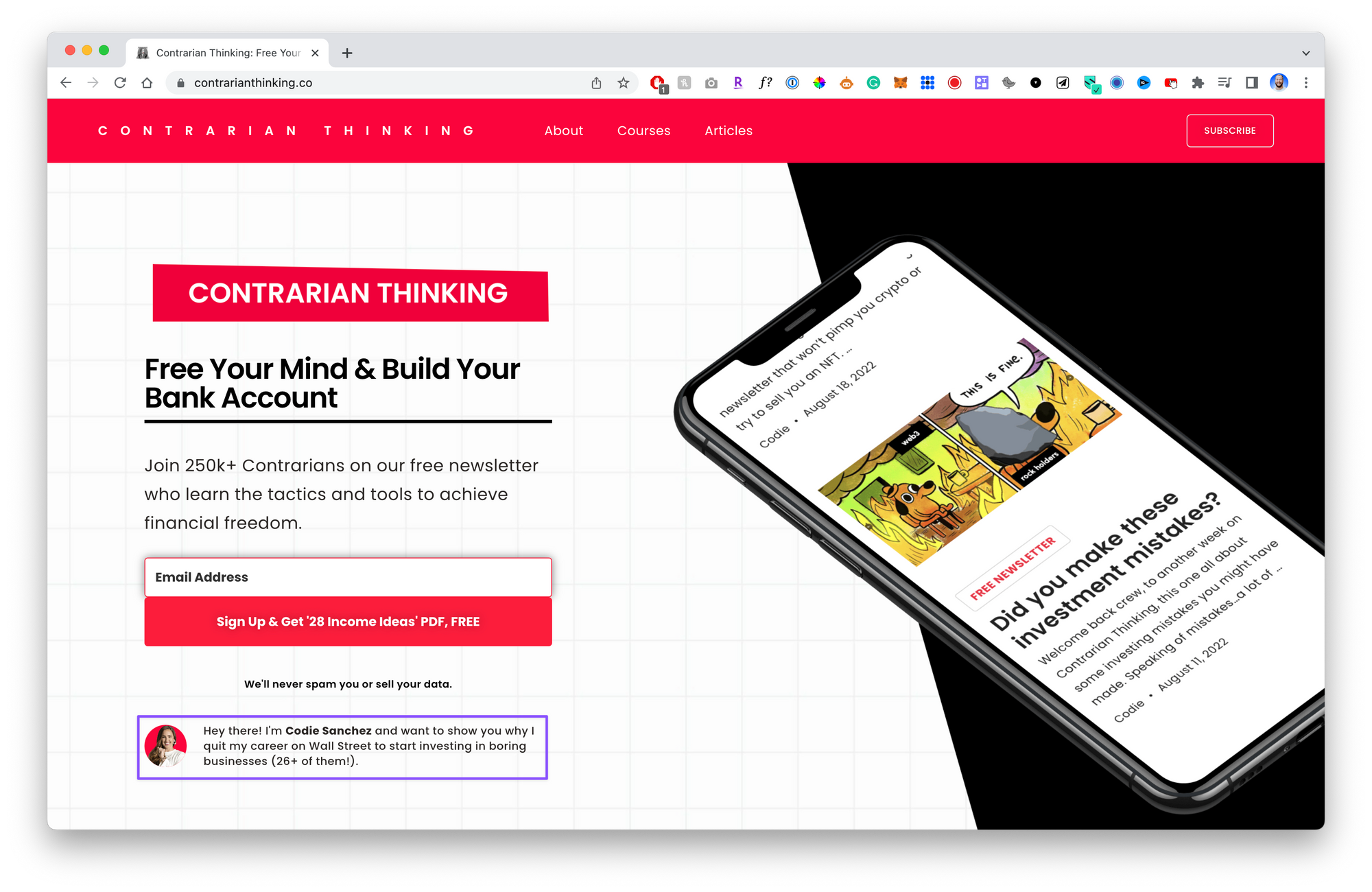

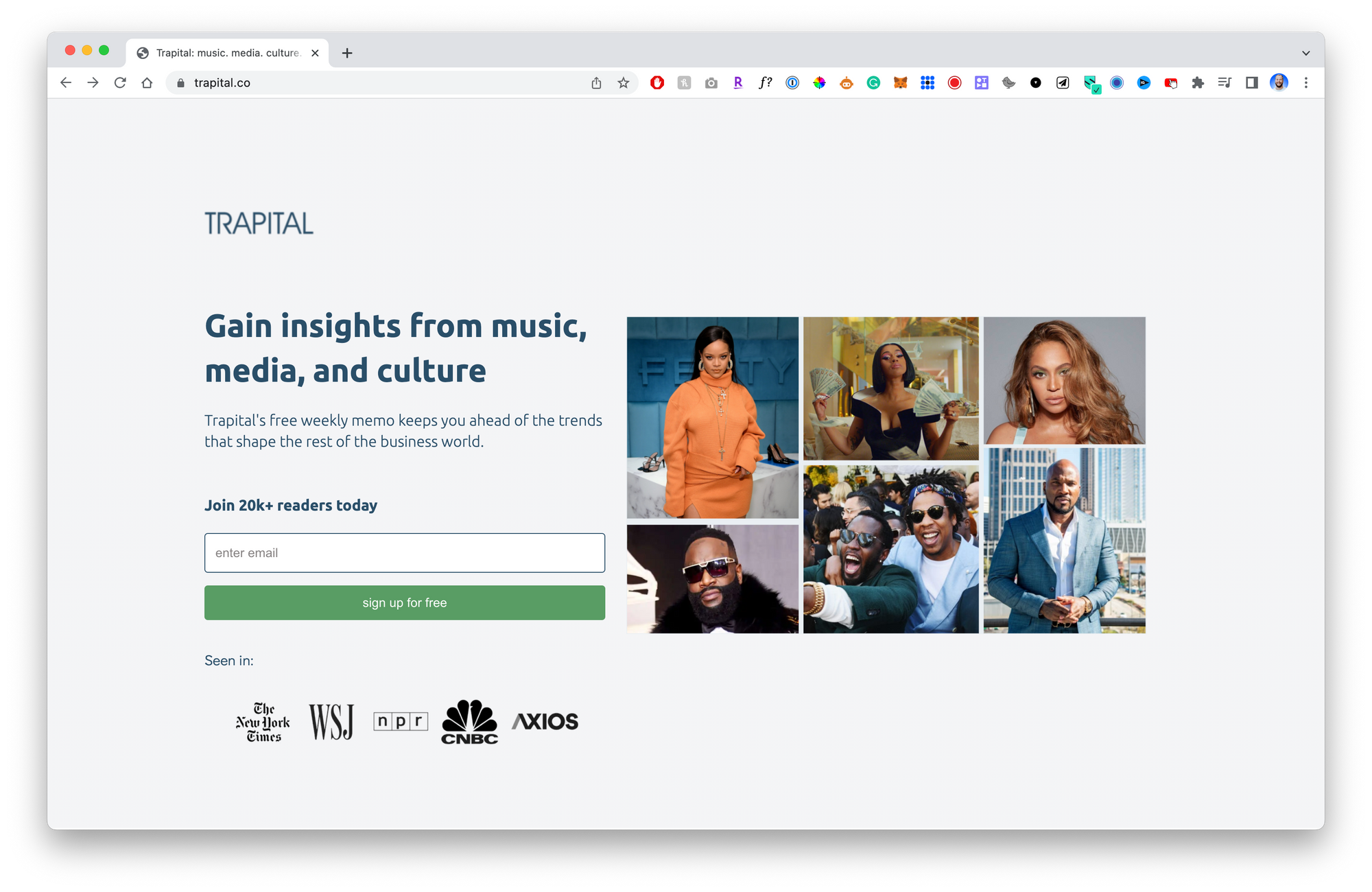
These are the models I like to follow. Building a brand that stands on its own, that's dedicated to its audience and its mission. And the creator behind the brand uses what social is good for (connecting with people) to drive attention to that brand.
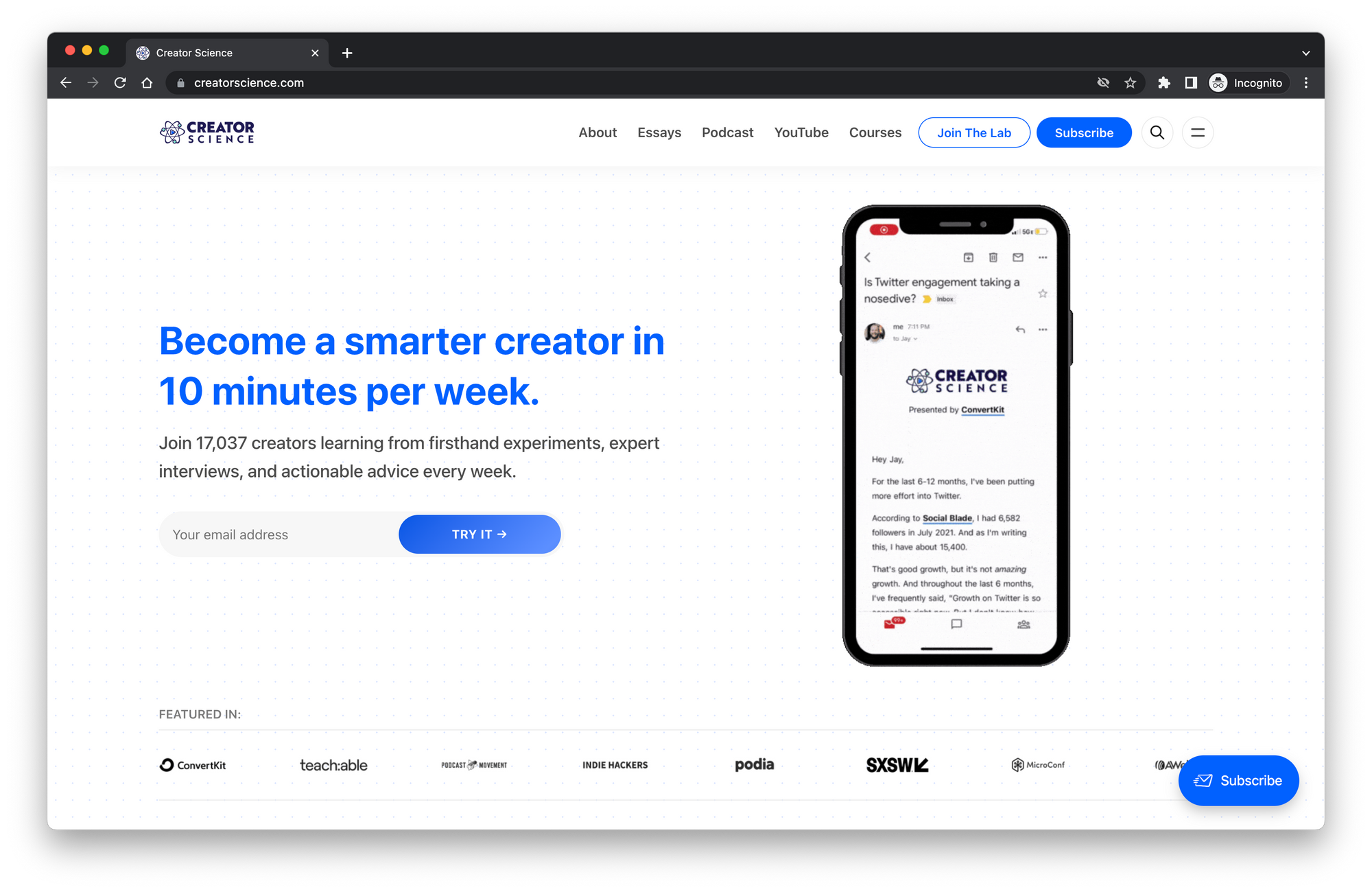
When the draw of the project itself isn't dependent on your name, it appeals to a larger audience. People ask themselves if they're aligned with the mission, not if they "like" the personality of the person behind it.
Not only do I think this approach is more legitimate and memorable – but I think it's more conducive to word-of-mouth too.
When you name your project, it makes "fandom" a little less weird. People may be a fan of you, but it's more socially acceptable to be a fan of a person's work or an entity than a human.
This may just be me, but I think it's more likely for someone to ask, "Do you read Contrarian Thinking?" than to ask, "Do you read Codie Sanchez's newsletter?"
And when I was just operating behind my name, I still felt compelled to NAME the newsletter! And if you're going to name one of your media properties, you'll feel compelled to name all of them (ahem – Creative Elements).
The more names you're juggling, the more difficult it is for other people to keep them straight. The more difficult it is for people to keep them straight, the less likely that even your biggest supporters will be effective advocates.
The other benefit of this approach is that you end up building a media company that may be valuable and sellable down the road. When everything is behind your name, it's harder to hand that company off to someone who isn't you – because YOU are what the audience expects.
Not only is it difficult to sell a company completely synonymous with your name, but I think it may also be more difficult to hire down the road. When people are being employed to grow an entity, it's easier for them to feel some sense of ownership behind that brand – it's unlikely people feel like a part owner of your name.
I like to use my personal website then as a living document about me, the person. I can share all of my projects, all of my interests, and link off to their dedicated digital homes. This website will also stay with me and it's a representation of ME more than one particular mission.
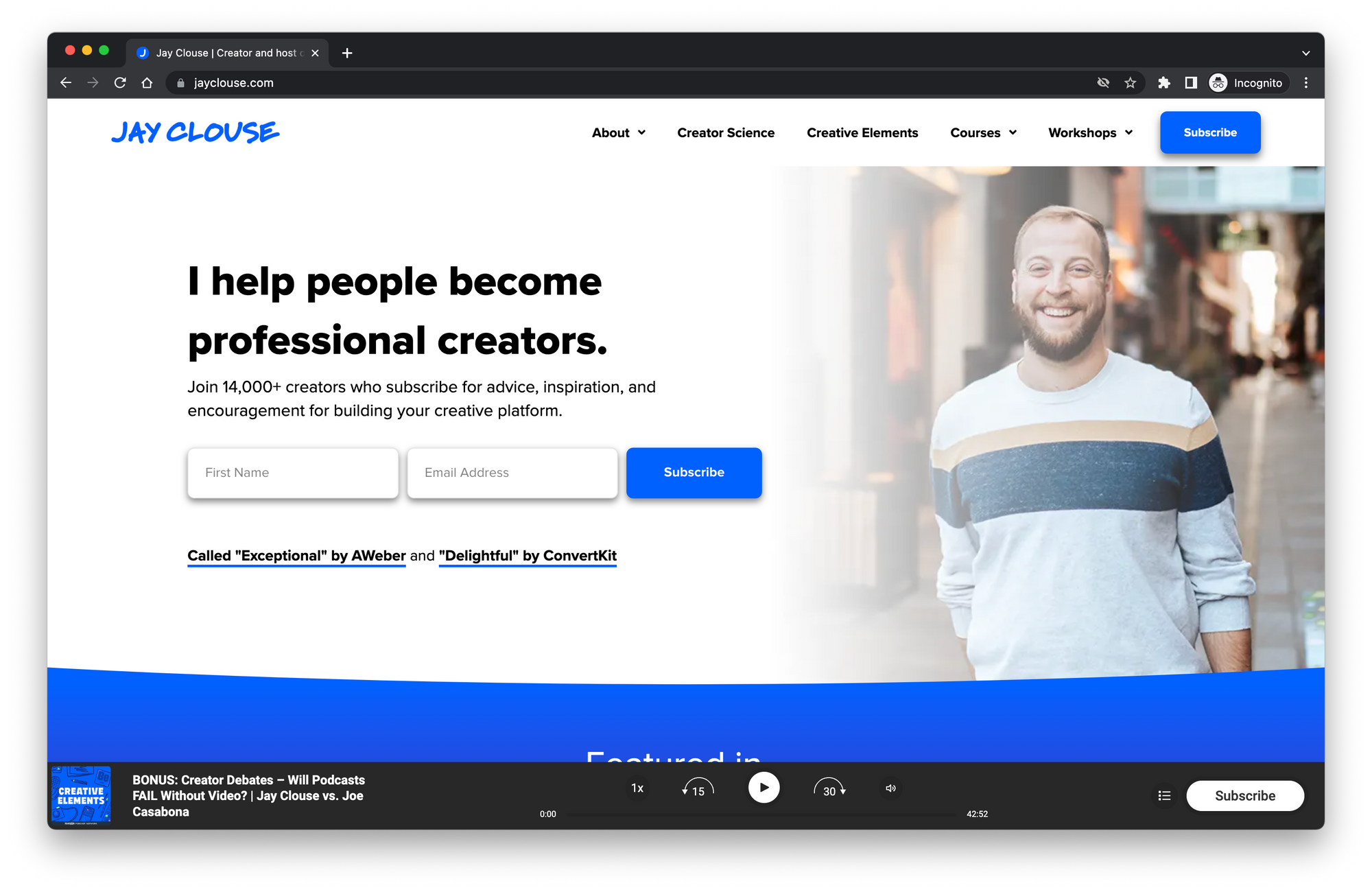
Of course, you could use your personal website as a second billboard for your biggest project at any given time. But, to me, it feels like an opportunity to share more of YOUR personality and not feel constrained to your niche.
So that's it! That's my approach to how I'm building my mini-media empire as a creator. Maybe it resonates with you!
I think the approach may be different for a more traditional "influencer" who are building behind their personality and appearance. But for those of us building media properties beyond our social accounts, I think it's a good approach.


